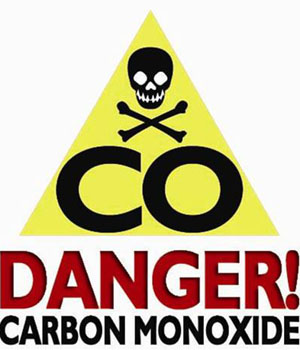December 22, 2010
 12/23/10 State officials are warning that, as the cold weather continues, so do the increased dangers of carbon monoxide poisoning. These dangers are most commonly associated with alternative heating sources, such as small gasoline engines, stoves, generators, lanterns, gas ranges or by burning charcoal and wood.
12/23/10 State officials are warning that, as the cold weather continues, so do the increased dangers of carbon monoxide poisoning. These dangers are most commonly associated with alternative heating sources, such as small gasoline engines, stoves, generators, lanterns, gas ranges or by burning charcoal and wood.
Carbon monoxide (referred to sometimes as CO) is an odorless, colorless gas that can cause sudden illness and death if inhaled. State health officials say more than 500 Americans die from unintentional carbon monoxide poisoning each year.
“The most common symptoms of carbon monoxide poisoning are headache, dizziness, weakness, nausea, vomiting, chest pain, and confusion,” said Mike Mettler, Director of Environmental Health at the Indiana State Department of Health. “High levels of carbon monoxide inhalation can cause loss of consciousness and even death.”
Mettler recommends the following to anyone experiencing symptoms of carbon monoxide poisoning:
“All people and animals are at risk for carbon monoxide poisoning,” said Mettler. “Certain groups—unborn babies, infants, and people with chronic heart disease, anemia, or respiratory problems—are more susceptible.”
Carbon monoxide from combustion sources can build up in enclosed or semi-enclosed spaces. People and animals in these spaces can be poisoned by breathing CO. State health officials recommend every home has a functioning CO alarm. These low-cost alarms can be found at your local hardware store.
In order to prevent carbon monoxide poisoning:
Carbon monoxide should not be confused with carbon dioxide, a colorless, odorless, incombustible gas formed during respiration, combustion, and organic decomposition and used in food refrigeration, carbonated beverages, inert atmospheres, fire extinguishers, and aerosols.
For additional information about protecting you and your family from carbon monoxide, please visit http://www.in.gov/isdh/24337.htm.